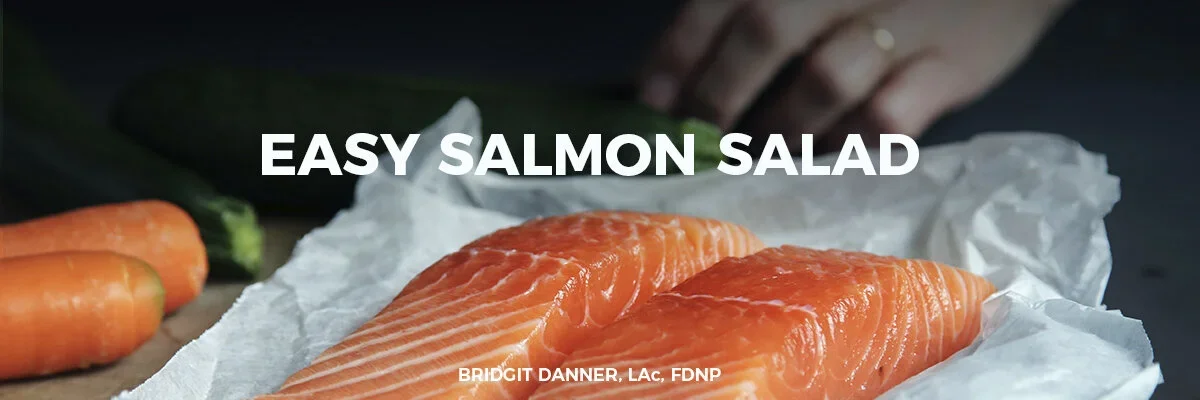Food Deserts and How COVID Has Affected Those of Lower Income
What is a food desert? It is not necessarily a literal desert, a place with no food availability. A food desert is where there is limited (or no) access to affordable, nutritious food. (1)
Now that you know what a food desert is, you may be wondering why it is important to understand this. We need to be aware of this because individuals living in food deserts are proven to suffer more from COVID, metabolic diseases, pollution, and obesity. (2, 3, 4, 5)
Understanding what a food desert really is can have a significant impact. While it may be saddening to know that people are living in food deserts, it can be harder to know what to do about it. I believe that understanding the issue is the first step to being able to take action to help.
How Is a Food Desert Created?
Locations of Supermarkets and Necessary Travel
The Economic Research Service of the US Department of Agriculture calculated that about 2.3 million people in the United States had to travel over a mile to get to a supermarket, with no car of their own. (6, 7)
The challenges in this scenario can quickly add up. For example, for a healthy diet, easy access to fresh fruits and vegetables is necessary. However, individuals with limited transportation have fewer and perhaps less frequent trips to the market.
This means that they are more inclined to purchase non-perishable foods, rather than nutrient-rich fresh foods. After all, they may not be sure how soon they'll be back in the store. Living in a food desert is much more intricate than merely not having food to eat; it's about having food that will sustain a healthy lifestyle and immune system readily available.
Another factor is access to culturally appropriate foods and access to nutrition for folks with dietary restrictions. This can be a powerful topic, especially for one minority group in particular: American Indians and Alaskan Natives.
This shows that food deserts aren't just an inner-city problem. Native Americans on reservations live in remote isolation. Access to food and work is minimal. This has resulted in 35% of Native American children living in poverty. While the US government has supplied food to families living on reservations for over 150 years, these folks are still 400% more likely to report not having enough to eat, when compared to other US households. (8)
As a quick note on the statistics, the North American Industry Classification System (NAICS) categorizes corner-store markets with major supermarkets (and health food stores). (9) This means that there is very little differentiation between Safeway and a Whole Foods market in some of the reporting.
Store Availability vs. Food Availability
Supermarkets stock their shelves based on consumer behavior, among other factors. Thus, they stock items that customers are proven to purchase.
In lower-income neighborhoods, they might stock less nutritious food and cater more to the diet that SNAP-participants have been proven to buy. This may perpetuate the cycle of poverty and poor nutrition. (10, 11)
While there could be a supermarket available, it may not stock as many healthy options as one in a wealthier neighborhood. (12)
Time Needed for Food Preparation
There is another food desert contributor: time to prepare nutritious meals. It's no secret that purchasing pre-made nutrient-rich meals is much costlier than buying the ingredients alone and cooking the dish. However, many SNAP participants are single-adult households, so time for preparing meals from scratch may be limited. (13) This could explain, partially, for the increased consumption of nutrient-poor foods.
The Thrifty Food Plan (TFP) estimates that households can prepare healthy meals within the program. The average SNAP assistance comes to about $1.40 per person for each meal. TFP suggests that this is reasonable if participants spend upward of 100 minutes preparing meals from scratch every day. The average household spends around 30 minutes. Thus, spending the required amount of time isn't always achievable for single-adult families. (14)
More money, however, isn't necessarily a solution either. The diet of most Americans, whether in the SNAP program or not, isn't pristine. Much has to do with personal preference. The statistics show that even when there was more money to fund the project, the dietary score among SNAP participants didn't improve. (15)
Problems Caused by Food Deserts
Obesity
Statistically, American Indians and Alaska Natives (mentioned above) also have a higher rate of obesity and metabolic diseases. Adults are 60% more likely to be obese when compared to non-Hispanic whites. The challenges and risks associated with obesity are no mystery. For one thing, these individuals have a higher prevalence of type 2 diabetes and diabetes-related death. (16)
At first glance, this may seem like a contradiction. How can you claim chronic hunger, but be obese? Obesity has many causes. It is not always connected to constant overindulgence in food. One contributing factor can be inconsistencies in eating habits and in eating foods that are nutrient deficient. (17)
People who suffer from low food security are often tempted to overeat when food becomes available. (18) It has been said that the provided USDA food commodities are high in fats and carbs and have low nutrient quality. (19)
These individuals, therefore, may be meeting their recommended calorie intake, but are regularly eating calorie-dense, nutrient-deficient foods that contribute to obesity. Since access to food outside the program is limited, their overall health is poor.
Increased Risk of Metabolic Diseases and Infection
Poor health not only contributes to metabolic disturbances but also heightens the risk of infectious disease. Amid the current pandemic, there's no disease that more readily comes to mind than COVID. Despite non-Hispanic American Indians and Alaska Natives (AI/AN) accounting for only 0.7% of the nation's 50-state population, it has been reported that this minority group accounts for 2.7% of COVID cases in just 23-states. Further, the AI/AN COVID victims had a lower average age than the white demographic. (20)
While even a nutrient-rich diet cannot prevent you from contracting the coronavirus, a healthy immune system can possibly help battle against it (and other infectious diseases). The same habits that help our bodies fight off infections can also help ward off metabolic conditions, such as cancer and diabetes. (21) Some of these practices include:
Maintaining a healthy weight
Eating whole grains, vegetables, fruits, and legumes
Limiting sugary drinks and fast foods
Limiting processed meats
A balanced, healthy diet is key to supporting normal immune function. And we need our immune system now more than ever. However, poverty and poor nutrition may contribute to some minorities suffering more significant impacts from the coronavirus. (22)
Pollution Sources
Impoverished communities (food deserts) also run the risk of higher pollution. (23) This can come in the form of vehicle emissions, factories, agriculture, shipyards, etc. These industries are usually located in less affluent areas, affecting many Black Americans, Hispanic Americans, and Asian Americans. (24)
Can we really link the development of metabolic conditions to pollution, though? According to one study, low air quality has been linked to "hypertension, alterations in blood lipids, insulin resistance, and obesity." Therefore, air quality can be lumped together with poor nutrition and food deserts in causing metabolic disturbances. (25)
Food Education and Ability to Implement
Food availability and education can also affect other households. For example, many food commodity programs are based on the food pyramid. Some of the nutritionists involved had doubts when this original food pyramid was being created. (26) However, the 1992 food pyramid project moved forward. It promoted complex carbs and was against fat groups.
Eventually, this food pyramid was revised in 2005. It was a more education-forward effort. However, this food pyramid's critics claimed that the project's visual learning aspect wasn't a complete success. (27)
Fast forward to today, and a new tool has been devised. "Choose My Plate" has replaced the two previous food pyramids. It encourages a healthy eating "journey shaped by many factors, including our stage of life, situation, preferences, access to food, culture, traditions, and the personal decisions we make over time." (28)
Unfortunately, individuals don't always have the flexibility to choose their paths in this 'journey.' Currently, much of our journey is determined based on income and demographics. This can be seen through the statistics of individuals in the SNAP program.
Whether the program itself or the participants carry responsibility isn't entirely clear. For example, individuals that were eligible to participate based on income, but did not, had an increased intake of nutrient-rich foods during the 2003-2004 and 2013-2014. In contrast, the opposite was true for program participants; those receiving food stamps had an increase in processed meats and other non-quality foods. (29)
The struggle with nutrition is that making a few good choices amidst an otherwise unhealthy diet doesn't make any perceivable changes. If you include an apple with a lunch that consists of a hotdog and potato chips, you haven't realistically lowered your threat of metabolic diseases. Really, to see a decrease in metabolic conditions, lifestyle changes are necessary, not occasional choices. (30)
Toxicity and Disease
However, lipid metabolism disorders aren't the only concern; there's still the impending threat of infectious disease. The coronavirus threat in minority groups, such as non-Hispanic Blacks is 2.6x higher than non-Hispanic Whites. Blacks also have a much higher morbidity rate; 2.1x higher than Whites. (31)
Here too, the connection between poverty and poor nutrition can be seen. When compared with the general population, 22% more Black Americans live below the poverty line. (32) As already noted, even with the governmental aide, nutrition can be a challenge.
That's not to mention the added challenge that some face with inner-city living. Urban core areas are characterized by higher racial segregation. White neighborhoods have an average of four times the amount of supermarkets than predominantly Black communities. (33) Therefore, statistically, food availability is less, and quality food may be even harder to find.
Impact of Food Deserts on Women
There's one last group to consider in this discussion. This group covers more than one race or ethnicity: women. In some areas and households, women are not given autonomy. (34) This can be defined in different ways: some believe that it should be absolute independence from everyone in making choices for her family. Others believe that teamwork with a spouse (as long as she is given considerable influence) is acceptable.
But, what does women's autonomy have to do with the topics of poverty and nutrition? In households where women aren't given an active say in the family's food, healthcare, and hygiene, women's health was proven to suffer. (35) Not only that, but the children, too, were likely to suffer from less food availability.
It has been proven that women who are given more control over a household's finances spend more money on the family's healthy habits. (36) Nutrition and hygiene increase, as does women's care.
Reversing Injustice in Communities & Healthcare
While it's easy to be saddened by all these stories of poverty, I believe it’s important that we as a society do what we can to support the “weaker” members.
As such, I am hosting a free webinar with two trained experts from In Our Own Voices. Part 1 will help you become aware of injustice that is unconsciously woven into cultural norms so that you can recognize it and help us all be better allies to the underprivileged.
In Part 2, we'll explore inequalities in healthcare. As this community is so passionate about healthcare, I am hopeful that the health care workers and advocates among us can help spearhead changes here.
>>> Come join us on Thursday, Oct. 22nd, at 12pm PT//3pm ET! <<<
Bridgit Danner, LAc, FDNP, is trained in functional health coaching and has worked with thousands of women over her career since 2004. She is the founder of Women’s Wellness Collaborative llc and HormoneDetoxShop.com.












Silver has been valued for centuries for its natural antimicrobial properties. When silver particles come into contact with bacteria, fungi, or viruses, they disrupt the microbe’s cell membranes and interfere with their ability to survive and reproduce. This makes silver an effective tool for reducing harmful microorganisms on surfaces, in water, and even in the body (when used appropriately).